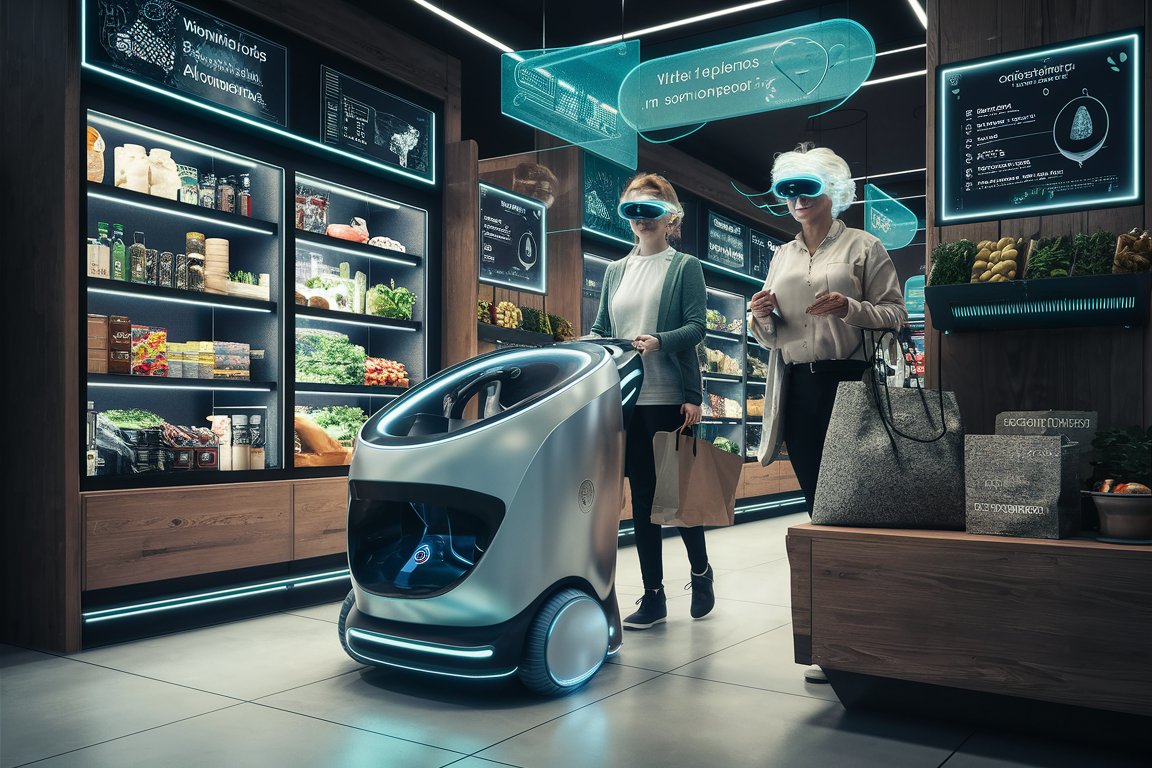Productivity is crucial in the fast-paced world of supermarket retail. Every aspect of a grocery store’s business, from inventory control to customer service, is vital to its bottom line. Recent technological advancements have completely changed the industry by offering innovative solutions for increasing productivity, streamlining processes, and elevating the shopping experience. The idea of efficiency is examined as this article explores how technology affects the food industry and how retailers do business.
The Role of Technology in Modern Grocery Stores
The grocery industry is experiencing a tech-driven transformation, reshaping traditional shopping paradigms. In a time where customers value speed, convenience, and personalized service, tech innovations are the keystone for success. Grocery chains are gradually harnessing technology to refine shopping experiences, examine market trends, and improve efficiency. For instance, adopting supermarket loyalty programs has been instrumental in customizing consumer interactions, thus ensuring customers go from one-time buyers to brand advocates. These programs utilize customer data to offer tailored rewards, discounts, and shopping experiences, encouraging repeat business and customer satisfaction.
Beyond loyalty schemes, technology facilitates informed decision-making and strategy development. With the help of real-time data analysis and predictive analytics, grocery retailers are matching supply with demand more accurately, avoiding stockouts and excess surplus. Data-driven insights allow for dynamic pricing strategies, tailored promotions, and targeted advertising campaigns, which have been proven to drive sales and customer engagement.
Benefits of Integrating Technological Solutions
The integration of technology into the grocery industry heralds a multitude of benefits for both retailers and consumers. For retailers, technology provides an unprecedented level of operational efficiency. Grocers may more efficiently store and handle large amounts of data with the help of elastic cloud databases, for example, which improves inventory planning and sales forecasting. Similarly, supply chain management systems give businesses greater transparency, allowing for a brief view of the product life cycle from farm to shelf.
These innovations trim operational costs and enhance customer satisfaction by ensuring product availability and sustaining high-quality standards. Technologies like electronic shelf labels (ESLs) help stores swiftly update prices and promotions, contributing to a transparent and dynamic shopping environment where customers feel informed and empowered.
Improving Customer Service with Technology
Exceptional customer service distinguishes leading grocers in a congested marketplace. Technological advancements such as self-service kiosks, mobile checkout solutions, and customer service robots elevate convenience and speed, redefining service benchmarks. These technologies streamline the shopping process and allow staff to engage more meaningfully with customers, focusing on service over transactional interactions.
Most significantly, these innovations support a customer-centric culture where feedback is rapidly actioned, preferences are anticipated, and service is incessantly improved. Subsequently, grocers can actualize a retail experience that is both high-tech and high-touch, giving rise to a unique shopping experience that customers are drawn to repeatedly.
Data-Driven Decision Making in the Grocery Sector
Data analytics in the grocery industry transforms how businesses approach everything from stocking to sales. Accurate, data-driven assumptions allow for a keen understanding of which products to stock and in what quantities, reducing overheads and maximizing profits. Grocers also employ data to track customer foot traffic within stores, using this intelligence to optimize shelf layouts and enhance product visibility.
These strategic data insights also extend to marketing initiatives; grocers can engineer campaigns that resonate deeply with their target audience by analyzing shopping patterns and demographic information. The resulting personalized marketing efforts often yield greater customer loyalty and an enlarged market share.
Innovation in Inventory Management
Accurate inventory management underpins a successful grocery operation. New technology trends, such as Radio-Frequency Identification (RFID), are redefining stock control with capabilities like tagging individual products for real-time tracking. Such granularity ensures that inventory levels are precisely monitored, shrinkage is controlled, and product availability is consistent with consumer demand.
Additionally, automation in the ordering and replenishment process mitigates the risks of human error, ensuring that stock levels are adjusted in line with sales velocity. This helps devote less space to storage and assures that merchandise is fresh, enhancing the customer experience.
Streamlining the Checkout Process
The conclusion of a shopping trip, the checkout, presents significant opportunities for improvement within the grocery sector. Advancements in payment tech, such as wearable payments, self-checkout, and automated checkout systems, address this by offering customers many payment options tailored to their convenience. These solutions cut down wait times, reduce error rates, and allow shoppers to exit the store quickly, culminating in a positive last impression that encourages return visits.
From the retailer’s perspective, these systems can provide valuable data on purchase patterns, facilitate labor allocation to customer-centric activities, and even reduce cashier fraud. With such multifaceted benefits, it’s unsurprising that checkout technologies have become a hallmark of modern, customer-focused grocery stores.
Embracing Mobile Applications for Enhanced Shopping Experience
Mobile applications are a linchpin in the future of grocery shopping, offering customers an all-encompassing tool for managing their shopping needs. These apps drive convenience and personalization by enabling shopping list creation, in-app purchases, and navigation to in-store item locations. Integration of augmented reality in some applications allows customers to preview products in their homes before purchasing, creating new possibilities for the pre-purchase consumer experience.
Furthermore, in-app push notifications are direct marketing channels to inform customers about the latest deals, store events, or loyalty rewards updates. This spurs in-the-moment purchase decisions and fosters a digital relationship between the retailer and the customer that can be nurtured continually.
Addressing Challenges and Providing Solutions
The journey toward complete technological integration in the grocery business is fraught with obstacles. Retailers face challenges such as disrupting existing processes, data security concerns, and an initial investment outlay for adopting new technologies. As they implement new digital solutions and ensure that employees and customers have a seamless transition, grocers need to be skilled at protecting the data of their patrons.
Creating a thorough plan that incorporates testing new systems thoroughly, involving stakeholders, and ongoing adaption in response to input is essential to overcoming these obstacles. Ultimately, the careful orchestration of technological deployment yields enhanced productivity, fortified customer loyalty, and a distinguishable competitive edge—signifying a thriving business ready for the future of retail.
Stay in touch to get more updates & news on Timesanalysis !



